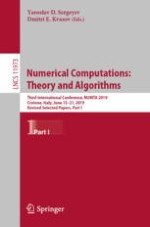2020 | OriginalPaper | Buchkapitel
The Sequence of Carboncettus Octagons
verfasst von : Fabio Caldarola, Gianfranco d’Atri, Mario Maiolo, Giuseppe Pirillo
Erschienen in: Numerical Computations: Theory and Algorithms
Aktivieren Sie unsere intelligente Suche, um passende Fachinhalte oder Patente zu finden.
Wählen Sie Textabschnitte aus um mit Künstlicher Intelligenz passenden Patente zu finden. powered by
Markieren Sie Textabschnitte, um KI-gestützt weitere passende Inhalte zu finden. powered by
